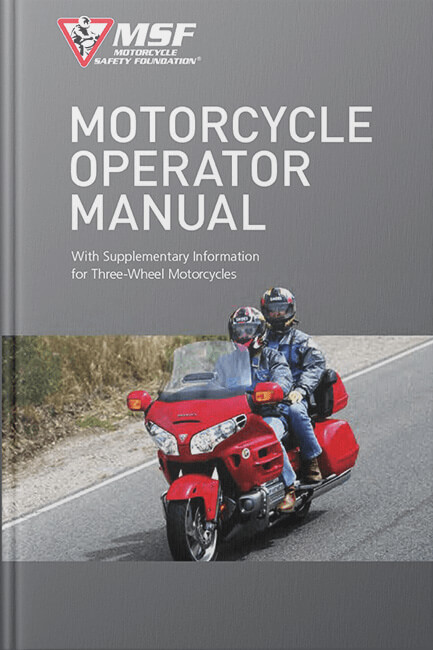
Mississippi Motorcycle Manual
The Mississippi DMV bases its motorcycle endorsement tests on the 16th edition of the Motorcycle Safety Foundation’s (MSF) Motorcycle Operator Manual.
Not only is this manual an essential study resource for beginner and advanced motorcyclists alike, it’s got some important updates that will be invaluable for learners to get familiar with. This new edition has more in-depth information to guide riders preparing to ride safely. It also helps novices develop effective street strategies, understand safe group riding practices and learn the best practices for carrying passengers and cargo. Please refer to the Mississippi Motorcycle Manual below.
The right gear
One of the primary things to consider is getting the right gear. This is a good way to protect yourself from injury. Unfortunately, the reality is that crashes are all too common amongst beginner riders. The MSF recommends that you wear the following gear, in order to avoid serious injuries:
- Protective clothing
- Face/eye protection
- A DOT-compliant helmet
According to the stats, the majority of motorcycle crashes occur on short trips (less than five miles), and just a few minutes after starting out. What’s more surprising is that most riders are traveling slower than 30 mph when a crash occurs. At such speeds, having a helmet on can reduce the number as well as the severity of head injuries by half!
The right bike
Your motorcycle should be “right” for you. This means that it should be right for your body; your feet should be able to touch the ground while you are seated, and the controls should be within reach and easy to operate. The MSF recommends that beginners start with smaller motorcycles. The minimum requirements for legal motorcycles are as follows:
- Headlight, taillight and brake light
- Front and rear brakes
- Turn signals
- Horn
- Two mirrors
Before heading out
Before getting out on the road, the MSF recommends the T-CLOCS pre-ride inspection, which should only take you a few minutes, but save you a lot of problems in the long run. A T-CLOCS inspection involves:
- Tires and wheels – tire inflation pressure, treadwear, tread surface conditions, front and rear brakes
- Controls – clutch and throttle, horn, mirrors
- Lights and electrics – headlight, taillight, high/low-beams, brake lights
- Oil and other fluids – engine oil, transmission fluid, brake hydraulic fluid, coolant, fuel valve, oil/fuel leaks
- Chassis – front suspension, rear shocks and springs, chain
- Stands – side stand, spring
According to the Motorcycle Safety Foundation, “Safe riding is as much as kill of the eyes and mind as it is of the hands and feet.” Good luck on the test and have a safe ride on the road!